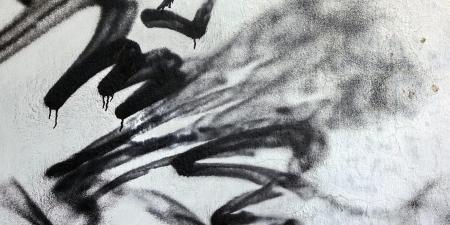Abstract
People can experience moral distress when they regard themselves as expected to pursue a course of action they believe to be morally wrong. However, beliefs that give rise to moral distress are sometimes underdeveloped. Experiences of moral distress are not uncommon for medical trainees, who are still in the process of forming their professional identities and whose identity-constituting beliefs might therefore be subject to ongoing revision. Thus, it is important for health professions training programs to incorporate case-based ethics education sessions into their structure to help identify and alleviate trainees’ moral distress, provide ethics education, and create a “safe space” for trainees to talk openly about moral concerns related to clinical practice. Such opportunities are crucial to the professional growth of trainees.
Case
Reema is a medical student with strong beliefs about preservation of human life as a primary purpose of medicine. One of her patients is a 65-year-old man with metastatic lung cancer. The attending physician, Dr. Alnin, decides to have a conversation with the patient about hospice care. The patient asks about a new and expensive chemotherapy that he had seen advertised. Dr. Alnin recommends against this option, citing the patient’s low likelihood of a positive response and minimal extension of the patient’s life even with an optimal response. Hearing this, the patient decides to pursue hospice. Reema is distressed by this decision because she feels that the team is giving up on this patient. She does not tell anyone that she feels this way, however, because she is concerned about being evaluated poorly by Dr. Alnin if she expresses disagreement with her advice to the patient and his family.
Commentary
It is no surprise when we encounter a case of moral distress involving a medical trainee. Trainees are usually first-career professionals, still developing a sense of their personal and professional moral values and identities [1], and are highly dependent on evaluations by others for advancement opportunities. These circumstances place them in a vulnerable position, and, as a result, trainees might feel they cannot risk speaking up, even when refraining from doing so seems contrary to their own developing professional identity.
This conflict between professional identity and perceived expectations is what we see in the case of Reema, who believes that her primary professional purpose, as a physician, is the preservation of human life. As a result, she is deeply troubled when she hears the attending physician with whom she is working, Dr. Alnin, recommend against additional chemotherapy and in favor of hospice for the 65-year-old patient with metastatic lung cancer. For Reema, recommending hospice care is tantamount to “giving up,” and she disagrees with her attending physician’s treatment plan as a result. However, it is not simply her disagreement with the attending physician’s recommendation that is the source of her moral distress. In this case, Reema’s moral distress is more nuanced. First, Reema has certain beliefs about what it means to be a physician—that a physician’s purpose is to preserve human life even for patients with a poor prognosis for meaningful recovery and that hospice is akin to “giving up”—and these beliefs shape her personal and professional identity in a particular way. Second, Reema perceives that because she is a medical trainee, she ought not to voice her disagreement with the attending physician, as doing so may have negative professional consequences for her. As a result of these beliefs, Reema’s moral distress is deeply paradoxical—in order to preserve her professional identity as a physician, she feels as though she must act in a manner that is contrary to her own core beliefs about that same professional identity.
Moral Distress and Identity-Constituting Beliefs
In order to better understand and, more importantly, address Reema’s moral distress, we should first clarify two key concepts. Let’s begin with the concept of moral distress itself. For brevity’s sake, we will utilize a definition of moral distress that one of us (EW) has argued for elsewhere, which we believe captures the phenomenon better than most alternatives: moral distress is “a negatively-valenced feeling state where one perceives a conflict between what one is expected to do and what morality requires” [2]. This description captures, we believe, what’s happening in Reema’s case rather well. From Reema’s perspective, there is a conflict between what she believes to be the right thing to do, which is to voice her deep disagreement with the attending physician’s recommendations in this case, and the expectation that, as a resident, she should not question the attending physician’s approach to patient care.
The other concept worth clarifying in this case is that of an “identity-constituting belief.” This concept makes use of a narrative notion of identity, whereby one’s sense of self is constituted, in part, by one’s beliefs about oneself and one’s place in the world [3, 4]. One’s narrative identity is thus the means by which one makes sense of and finds meaning in the world [4]. An identity-constituting belief, then, is a belief that is fundamental to one’s sense of self, one’s place in the world, and one’s purpose. Clearly, Reema’s belief that the primary purpose of medicine is to preserve life is such a belief—it defines her understanding of who she is as a physician and what makes her life and work meaningful. As such, perceived obstacles to Reema’s ability to express this aspect of her identity are likely to be deeply distressing for her.
What Exactly Is Morally Distressing about Reema’s Situation?
There are at least two aspects of Reema’s moral distress that can be readily addressed in this case.
First, Reema’s belief that recommending hospice and advising against further chemotherapy for this patient is contrary to the primary purpose of medicine is one that bears closer examination. Although we do not know what influenced the development of Reema’s belief about the primary purpose of medicine, there is some reason to think that her belief itself is not fully developed (since she has no clinical experience beyond rotations) and that further exploration would help her better understand and develop her professional identity and beliefs. For example, her mentors might help her to explore why she regards hospice care as “giving up” rather than as an appropriate medical specialty that provides palliation and comfort at the end of life. Moreover, there has been some debate about how to characterize the purpose of medicine [5, 6], a debate of which Reema seems largely unaware. If Reema were asked, for example, to consider these various perspectives on the purpose of medicine, Reema might be prompted to question her presumption that promoting human life requires maximally aggressive care in all circumstances and that one must promote human life without regard for quality of life. A deeper discussion with Reema of the role and responsibility of physicians at the end of a patient’s life, when all treatment modalities have failed to stem the disease, might also contribute to changing her perception that only maximally aggressive care is laudable care.
As a physician, Reema believes that she—and Dr. Alnin—should be aggressively working to prolong this patient’s life, so keeping silent about a treatment plan that contravenes this goal feels like a betrayal of the self. Reema’s distress is thus explained, in part, by the fact that she feels she cannot act in accordance with her identity-constituting beliefs in this case. Her moral distress, however, provides an opportunity for her to develop a more nuanced perspective about the purpose of medicine and the meaning of the obligation to preserve human life. If her mentors can help Reema develop a more nuanced belief about the purpose of medicine and thereby contribute to the development of her identity-constituting beliefs, her moral distress can perhaps be alleviated in the process.
The other aspect of Reema’s moral distress that can be readily addressed in this case is her perception that she should keep silent. The concern that she might be evaluated poorly if she challenges the attending physician is understandable, especially given the vulnerable position that trainees find themselves in relative to attending physicians. But the expectation that trainees should never express disagreement or challenge the recommendation of the physician is contrary to the moral virtues of courage, intellectual honesty, and truthfulness, which are regarded as physician virtues [7]. Cultivating these moral virtues should therefore be a component of medical training programs. Reema’s still-developing professional identity is also an opportunity for her to cultivate these moral virtues and to incorporate them into her own conception of what it means to be a physician.
An Action Plan for Addressing Resident Moral Distress
Thus far, we’ve identified two factors that seem to be the source of Reema’s moral distress: her belief that the primary purpose of medicine is to preserve human life—along with her fairly narrow interpretation of what this purpose entails in the clinical setting—and her perception that, as a resident, she is expected to refrain from voicing any disagreement with the attending physician’s recommendations. We’ve also identified several reasons for thinking that Reema’s moral distress has more to do with her lack of professional development than any barriers to doing what morality requires. We will conclude our discussion by offering an action plan for addressing these sources of moral distress. This action plan can be easily integrated into an existing medical training program, and it offers significant educational and team-building benefits to both trainees and the attending physicians who mentor them. As such, there are compelling reasons to adopt some version of this action plan into almost any medical training program, even apart from the benefits that follow from addressing trainees’ moral distress and promoting their professional development.
The sources of Reema’s moral distress can be addressed via an educational program devoted to case-based discussion with other trainees, facilitated by an ethicist. Such programs are already in place at several medical schools, and results have been consistently positive [8, 9]. Engaging trainees in case-based discussions of ethical issues promotes peer-to-peer learning, creates a sense of camaraderie out of shared experiences, and creates something of a “safe space” for trainees to express their views on the ethical aspects of difficult cases. In addition, such programs create the opportunity to further educate trainees on the ethical aspects of medicine, including the purpose of medicine and the moral virtues of a good physician. Such a program would no doubt have been helpful in a case like Reema’s, as it would have provided her a venue to explore some of the implications of her beliefs about medicine and to receive guidance about how to cultivate a more nuanced perspective on what it means to be a seasoned medical professional.
Conclusion
An underdeveloped professional identity is a significant knowledge deficit for medical trainees—doubly so when they lack adequate opportunities for professional growth. Medical trainees are, we contend, significantly more likely to have an underdeveloped professional identity in virtue of their early career status and, as a result, are more likely to experience moral distress of the sort presented in Reema’s case. Professional growth—particularly of an ethical nature—is best addressed, we claim, by incorporating case-based ethics education into medical training programs. Such opportunities allow for trainees’ underdeveloped beliefs about their personal and professional identity and the ethics of medicine to be explored and expanded upon, with support from their peers and guidance from an expert. In addition, they allow trainees opportunities to express their views regarding the ethical dimensions of patient care, which further stimulates and nurtures their professional moral development. By promoting dialogue about professional moral virtues and the ethical dimensions of patient care, not only trainees but all health care professionals are encouraged to give voice to their personal and professional values.
References
- Branch WT. Supporting the moral development of medical students. J Gen Intern Med. 2000;15(7):503-508.
-
Weber E. Moral distress, workplace health, and intrinsic harm. Bioethics. 2015;30(4):248.
- Ricoeur P. Narrative identity. Philos Today. 1991;35(1):73-81.
-
McAdams DP. Narrative identity. In: Schwartz SJ, Luyckx K, Vignoles VL, eds. Structures and Processes. New York, NY: Springer; 2011:99-115. Handbook of Identity Theory and Research; vol 1.
- Calman K. The profession of medicine. BMJ. 1994;309(6962):1140-1143.
- Pellegrino ED. The internal morality of clinical medicine: a paradigm for the ethics of the helping and healing professions. J Med Philos. 2001;26(6):559-579.
- Pellegrino ED. Professionalism, profession and the virtues of the good physician. Mt Sinai J Med. 2002;69(6):378-384.
- Alfandre D, Rhodes R. Improving ethics education during residency training. Med Teach. 2009;31(6):513-517.
- Vertrees SM, Shuman AG, Fins JJ. Learning by doing: effectively incorporating ethics education into residency training. J Gen Intern Med. 2013;28(4):578-582.



